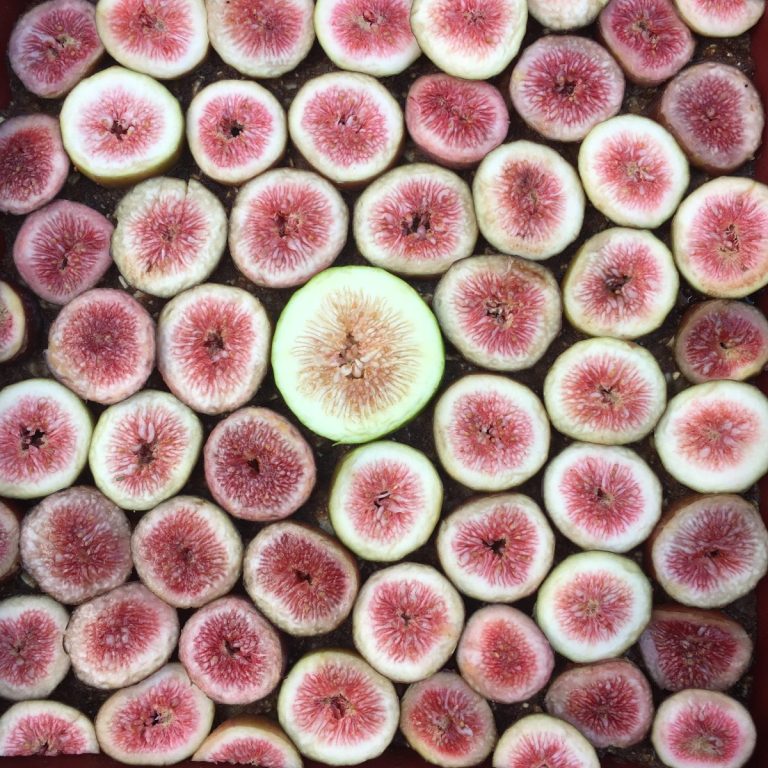A question some wonder is “Does fruit have protein?” In short, yes, fruit does have protein, but not a substantial amount. As shown in a previous post, all nutrient calories come from only three sources: carbohydrates, proteins, and fats. Fresh fruit protein content is about 1%, although some like guava and tamarind have over 2.5%. Most of the calories from fruits comes from carbohydrates. For plant-based protein you can get much more from other high-protein sources, like beans, lentils, soy, nuts, and certain grains. It’s worth noting that dried fruit also has a higher protein content, due to less weight from water. Goji berries are the champion of fruit protein, with over 14%. Today, however, we are focusing on protein in fresh fruits.
How much fruit would you have to eat to get the FDA recommended amount of 50 grams? Depending on the fruit, it could be a lot! As an example, according to the USDA, Americans eat more bananas than any fresh fruit: 28.2 pounds per person per year. This is the equivalent of 139 grams of protein. A person would have to eat about 10 pounds of bananas to get a day’s worth of protein. For the second-best protein content in fresh fruit, guava, you would have to eat 4.3 pounds to get 50 grams of protein. If you want to calculate this yourself you can use this formula:
11.023 / percent protein = pounds needed for 50 grams protein
This does not mean you should get all your proteins from fruits. A variety of protein sources are needed to round out the different proteins needed. Fruits are not “complete proteins,” meaning they do not have all of the essential amino acids in proteins in adequate amounts. Soy is an example of a complete protein. Fruits, however, are very healthy in general, being high in vitamins, fiber, and antioxidants. So, be sure to eat more fruit, but don’t rely on them for your protein intake.
Chart of Top 50 Fresh Fruits Protein Content
The following chart lists 50 of the most popular fruits with their protein content, listed as a percentage. For instance 2.2% means for 100 grams there are 2.2 grams of protein.
| No | Fresh or Raw Fruit | Protein Percentage |
|---|---|---|
| 1 | Tamarinds | 2.80% |
| 2 | Guavas | 2.55% |
| 3 | Passion Fruit | 2.20% |
| 4 | Kumquats | 1.88% |
| 5 | Jackfruit | 1.72% |
| 6 | Pomegranates | 1.67% |
| 7 | Loganberries | 1.52% |
| 8 | Sapote, Mamey | 1.45% |
| 9 | Mulberries | 1.44% |
| 10 | Apricots | 1.40% |
| 11 | Currants | 1.40% |
| 12 | Blackberries | 1.39% |
| 13 | Longans | 1.31% |
| 14 | Jujube | 1.20% |
| 15 | Raspberries | 1.20% |
| 16 | Kiwifruit | 1.14% |
| 17 | Lemons | 1.10% |
| 18 | Boysenberries | 1.10% |
| 19 | Bananas | 1.09% |
| 20 | Nectarines | 1.06% |
| 21 | Sweet Cherries | 1.06% |
| 22 | Starfruit | 1.04% |
| 23 | Sour Cherries | 1.00% |
| 24 | Oranges | 0.94% |
| 25 | Peaches | 0.91% |
| 26 | Gooseberries | 0.88% |
| 27 | Clementines | 0.85% |
| 28 | Cantaloupes | 0.84% |
| 29 | Lychees | 0.83% |
| 30 | Mangos | 0.82% |
| 31 | Muscadine Grapes | 0.81% |
| 32 | Tangerines | 0.81% |
| 33 | Persimmons | 0.80% |
| 34 | Grapefruit | 0.77% |
| 35 | Pummelo | 0.76% |
| 36 | Figs | 0.75% |
| 37 | Blueberries | 0.74% |
| 38 | EuropeanGrapes | 0.72% |
| 39 | Plums | 0.70% |
| 40 | Limes | 0.70% |
| 41 | Strawberries | 0.67% |
| 42 | AmericanGrapes | 0.63% |
| 43 | Watermelon | 0.61% |
| 44 | Pineapple | 0.54% |
| 45 | Honeydew | 0.54% |
| 46 | AsianPears | 0.50% |
| 47 | Papayas | 0.47% |
| 48 | Cranberries | 0.46% |
| 49 | Pears | 0.36% |
| 50 | Apples | 0.27% |
Research in food protein and calorie chart is based on U.S. Department of Agriculture, Agricultural Research Service. FoodData Central, 2019. fdc.nal.usda.gov.


Nice 🙂
Thank you